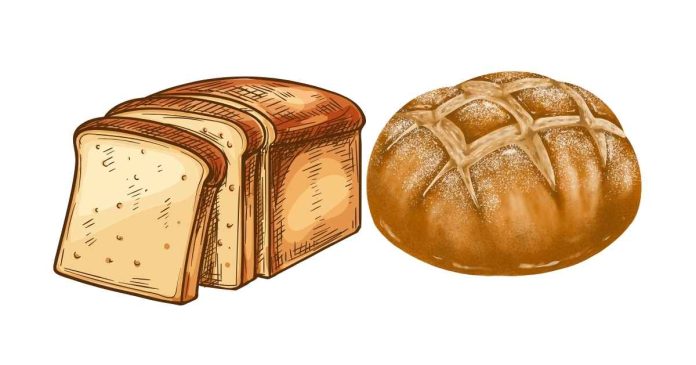The weight of a loaf of bread can vary significantly based on factors like the type of bread, ingredients, and baking method. Here’s a more detailed breakdown:
1. Standard White or Whole Wheat Bread:
- Typical weight: 16 to 24 ounces (1 to 1.5 pounds)
- These loaves, which are commonly sold at supermarkets, typically weigh around 20 ounces (1.25 pounds). The weight can differ depending on whether it’s a regular or “jumbo” loaf.
2. Artisan or Specialty Breads:
- Typical weight: 24 to 36 ounces (1.5 to 2.25 pounds)
- These breads tend to be denser and may contain specialty ingredients like seeds, nuts, or added grains. Examples include sourdough, focaccia, and ciabatta.
3. Mini Loaves or Single-Serve Breads:
- Typical weight: 8 to 12 ounces (0.5 to 0.75 pounds)
- These smaller loaves are designed for individual or small family use. They might be marketed as “sandwich bread” or “dinner rolls.”
4. Loaf Size Variation:
- Loaf size can vary between different brands and bakeries. For instance, commercial bread (like Wonder Bread) tends to be standardized in weight, while artisanal loaves might be heavier due to the use of more natural ingredients and different baking techniques.
5. Factors Affecting Weight:
- Ingredients: Breads with higher moisture content or ingredients like fruits, vegetables, or nuts may weigh more.
- Shape: Some loaves may be wider and taller, affecting the total weight.
- Baking Method: Some artisan bakers use techniques that lead to denser or airier loaves, impacting the final weight.
Conclusion:
Most commercially produced loaves of bread weigh around 20 ounces (1.25 pounds), but artisan varieties or specific types like sourdough or multigrain can be heavier, reaching 2 pounds or more.


